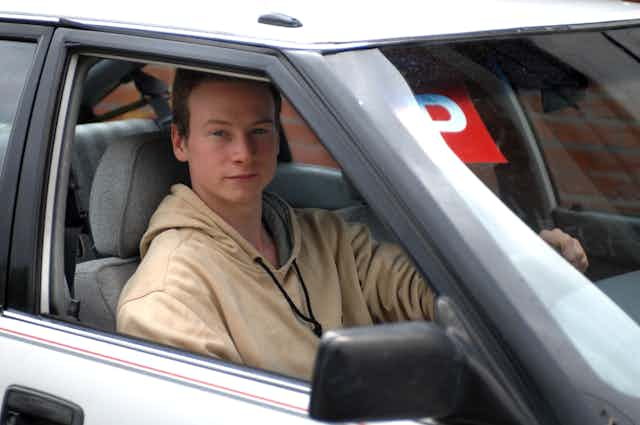Many Australians will recognise young driver crashes as a serious problem. However, few might realise that crashes are the leading cause of death and acquired disability of young Australians, during the otherwise healthiest stage of life (rivalled only by suicide in late adolescence).
Youth aged 17-25 comprise 13% of the Australian population, but 22% of the annual road toll. They are more likely to go to hospital due to a crash than any other age group.
While the statistics are confronting, the myths surrounding them are affronting. Having trained in developmental psychology, I was surprised to hear comments within the road safety community such as: they just think they’re invincible, there is nothing you can do about it, and their brains aren’t developed properly – following advances in brain imaging research.
The ‘youth factor’ in crashes
The truth is that newly licensed drivers of any age have the highest risk of crashing in the months following the (very safe) learner period. They are novices of a very complex skill and, as with any complex skill, they make mistakes. Factor in that most new drivers are young and it follows that young people have more crashes.
Why then is this not readily accepted?
A “youth factor” contributes to the high crash risk. The increased risk for young new drivers is higher than for older new drivers. However, it is questionable whether this is due to intentional or unintentional risks.
In all age groups a proportion of drivers intentionally break road rules; speeding is probably the most widely accepted example. Young drivers are no exception and are more likely to speed and break other such rules than other age groups. Yet this still relates only to a minority.
Developmental factors, however, apply to all youth and particularly contribute to unintentional risks. During childhood, changes in the brain start to occur that strengthen neural connections. They allow quicker and more efficient travel of nerve impulses, as cognitive abilities become more localised to certain brain areas.
It is during middle adolescence – when new licensed driving typically begins – that this process reaches the frontal lobe of the brain. This area is associated with functions such as controlling impulses, overriding emotions and anticipating consequences – all extremely important for ensuring safe driving. This process continues into the early 20s.
Sleep needs also increase at this time, to around nine hours. The hormone that helps bring on sleep is released later at night, around 11PM. With lifestyles typically demanding earlier bed times and rise times, these changes result in youth being prone to fatigue. This is reflected in their over-representation in fatigue and fall-asleep crashes.
Adolescence is also a time of important social shifts, including decreased dependence on parents and greater standing of peers. For reasons such as social outings and casual work, young people drive more at night than adults, which is a higher crash risk time for all drivers. Therefore youth are more likely to be in a crash simply by when they choose to drive.
Adolescent brains are therefore developing “properly” and in important ways, including changes that facilitate leaving home and moving into the adult workforce. Yes this results in intentional “pushing the limits” for some. However, for all, everyday factors such as hazards and distractions are not as easy to perceive and manage compared to older drivers.
What then can we do?
Moving towards safer roads
Calls for mandatory driver training are common. However, traditional programs fail to focus on these key factors. Often they target advanced vehicle handling skills in imminent crash scenarios, which, contrary to expectations, are shown to increase crashes. Such complex skills cannot be mastered in a day. Nor can they be applied effectively without practice, yet these skills might be needed months later.
Such approaches increase young drivers’ judgement of their skills beyond their actual ability. This results in more rather than less risk being accepted when driving.
Alternatively, licensing conditions for new drivers – including restrictions on night driving and peer passengers – serve to reduce exposure to high-risk conditions. Contrary to some beliefs, they do not punish all for the sake of the intentionally risky few, but rather address inexperience and developmental limitations. They have proven to be the single most successful initiative in reducing youth crash casualties.
With increased cries of “the nanny state” and a current federal inquiry into restrictions on “personal choices”, it is timely to increase general understanding of the young driver problem (rather than the problem young driver). Through this, we should support initiatives that protect youth during an important stage of development while they learn an also important but complex life skill.

